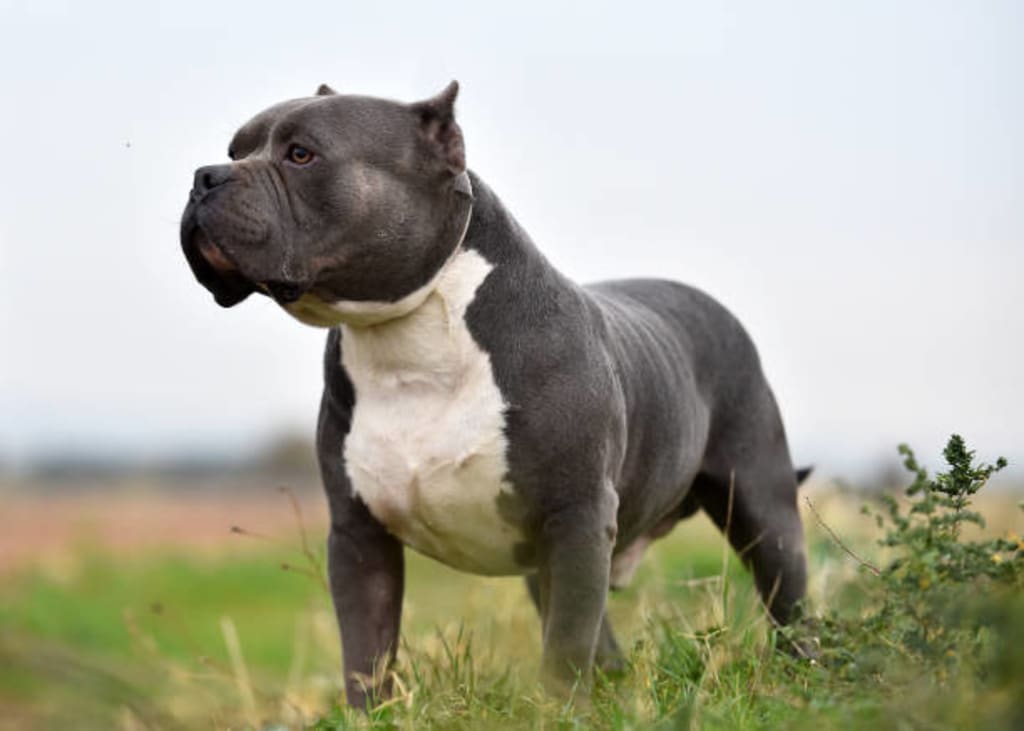The issues with banning dog breeds and the American Bully XL
This year, the UK won't use science to identify the American Bully XL when it outlaws them.

The Dangerous Dogs Act would outlaw American Bully XL dogs by the end of the year, according to UK Prime Minister Rishi Sunak, who called them "a danger to our communities." The action was taken in response to the death of a 52-year-old man who was attacked by two American Bully XLs while walking on the sidewalk, resulting in his death.
After being outlawed, it will be illegal to breed or sell American Bully XLs in England, Wales, and Scotland. Any of these dogs who are currently being owned must be neutered, insured, and leashed and muzzled when out in public.
Pit Bull Terriers were crossed with other stocky breeds, such as different bulldogs and the American Staffordshire Terrier, to create the enormous, muscular, big-headed dogs that weigh more over 100 pounds. On the UK's list of prohibited breeds, American Bully XLs will join Pit Bull Terriers, Japanese Tosas, Dogo Argentinos, and Fila Brasileiros.
Unconfirmed sources attribute the breed to a substantial fraction of the roughly 12 deaths from dog attacks that have occurred in the UK since 2021. Recently, especially during the COVID-19 Pandemic, the popularity of American Bully XLs, which are not recognized by The Kennel Club in the UK or the American Kennel Club, has skyrocketed.
How to recognize dog breeds
The fact that the American Bully XL is not recognized as a unique breed highlights what will be a significant issue with the ban: dog identification. American Bully XLs will be singled out by dog legislation officers purely based on appearance, similar to the other breeds currently prohibited in the UK. This means that many muscular-looking mixed-breed dogs will also face onerous restrictions, even if they are not "purebred" American Bully XLs.
A group of dog experts at the Interdisciplinary Forum for Applied Animal Behavior were asked to examine a few dozen photos of dogs and determine whether the puppies were purebred or mixed breeds, as well as to identify their breeds. Dr. Patricia McConnell, a renowned dog behaviorist who is "adamantly against" breed bans, shared this story on her blog. The specialists performed poorly despite their extraordinary expertise. The survey's creator, Dr. Victoria Voith, a professor of animal behavior at Western University, provided the genetics of the dogs, the majority of which were heavily crossed breeds of various kinds. The lesson? The breed of a dog cannot be determined solely by looks.
As a result, even if a dog closely resembles an American Bully XL, it is impossible to be certain of this. It's likely that many enormous, bulky, and big-headed dogs and their owners may face penalties when the ban goes into effect. Of course, the restriction imposed by the UK may have had this as its goal.
Breed and behavior
Previously, researchers contrasted the behavior of dogs that were allowed and those who were prohibited. In one study, 61 shelter dogs were evaluated for behavior, 21 of which were classified as "pit bulls." Although the bully-type dogs were more easily aroused, the pit bull types did not exhibit any greater levels of hostility toward food or handling than the non-pit canines.
Another study compared the behavior of dogs who were prohibited to that of Golden Retrievers, who are arguably the ideal family pet. Aggressive behavior did not differ statistically significantly from other behaviors.
To investigate whether breed has an impact on behavior, a group of scientists last year looked at a vast database of dog DNA. They only discovered a meager connection. Breed doesn't seem to matter as much as environment and upbringing.
According to McConnell, "every dog should be assessed as an individual." "I have encountered extremely aggressive Golden Retrievers and stupid, sluggish Border collies."
The fact that strong, big-jawed dogs like American Bully XLs can bite and cause far more damage is a valid argument in favor of the prohibition.
"In [American bullies] it's a crushing or a tearing injury," NHS consultant surgeon Richard Baker told BBC News. Once they take hold, they won't let go. injuries of that nature is more harmful than injuries to smaller canines.
However, it is far from obvious whether breed bans are often effective. Dog attacks in the UK have risen steadily since the Dangerous Dogs Act was passed in 1991 and show no signs of slowing down.
Dogs are frequently off-leash in public parks in the UK, including crowded London, although in the US, roaming dogs in city parks are frowned upon and frequently officially forbidden. Furthermore, whereas most U.S. localities require licensing, the UK does not require dog registration. Instead than unscientifically condemning particular breeds, the UK may need to reexamine its cultural relationship with dogs in order to prevent dog bites.
About the Creator
Reader insights
Nice work
Very well written. Keep up the good work!
Top insights
Compelling and original writing
Creative use of language & vocab
Easy to read and follow
Well-structured & engaging content
Excellent storytelling
Original narrative & well developed characters
Expert insights and opinions
Arguments were carefully researched and presented
Eye opening
Niche topic & fresh perspectives
Heartfelt and relatable
The story invoked strong personal emotions
Masterful proofreading
Zero grammar & spelling mistakes
On-point and relevant
Writing reflected the title & theme





Comments (1)
You can’t ban dogs! Any dogs! It’s all in there training! If a dog is bad, it’s the owners fault, NOT the dogs! So blame the owners!